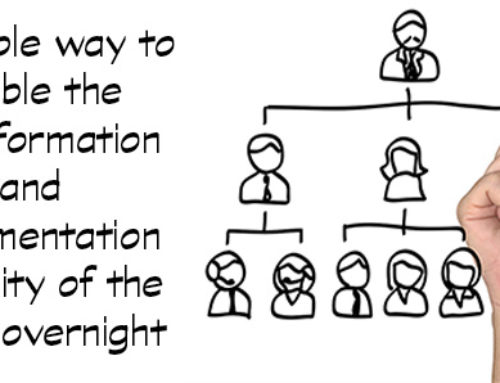How do I implement MSP? It’s the question that all executives face once they have made the decision to use the framework for programme management. Knowing where to start is the tricky part, so here are some pointers.
Why are you doing this?
If you don’t know the answer to this fundamental question there is a real danger you will end up with yet another “solution looking for a problem”.
Why do you want to use MSP? Are you trying to increase the focus on benefits? Are you trying to manage ambiguity and uncertainty that can’t be handled using project management techniques? Are you working in collaboration with other organisations? Do you want to better co-ordinate separate projects that are all working toward the same goal?
Taking the time to write down half a dozen or so simple high-level objectives for the implementation of MSP will help clarify things in your own mind, share your thinking with others and inform your next steps.
What will you use MSP for?
There are a wide variety of situations in which MSP can help, and the MSP manual provides useful guidance on types of programmes and how to assess their impact by looking at the nature of the change a programme is expected to deliver.
One of the first questions I recommend you consider is whether you are looking to use MSP for a single programme (or perhaps a couple programmes) or are you seeking to implement it across your organisation? If it is the former then you can focus solely on application and tailoring to suit the individual programme. If it is the latter you will need to consider broader aspects, such as integration with your organisation’s project management approach and organisational governance arrangements.
Many Government agencies are looking at MSP following their P3M3® assessment, as the foundation for their programme management approach. This is fine, but you can’t implement MSP the same way you can implement PRINCE2 for example. MSP needs to involve executives at a very senior level and reaches deeper into the operational areas affected by the change, so knowledge and skills are required across a broad range of people. This makes stakeholder engagement about MSP itself a critical ingredient.
Have a look in the mirror to see where you are going
Sounds weird doesn’t it? Allow me to explain…
Most change programmes that choose to implement MSP are already underway – the government policy announcement has been made, the executive have stated their reform agenda etc. This means that things are already happening and you don’t have the luxury of starting with the proverbial clean sheet of paper.
In these circumstances what I recommend is that you work through the various elements of the framework – but in particular the governance themes and programme information – to see how your current management arrangements stack up against MSP. This will then allow you to see what you have in place from an MSP perspective, and will no doubt shed new light on the programme you are running and where it is currently taking you.
The MSP manual includes a simple health check that can be adapted for this purpose.
Look at the ridge not the summit
Change programmes are major undertakings these days, so not surprising the task of implementing MSP can seem quite daunting. You can see the value in the method, but you can’t see how to modify the management arrangements in-flight to encompass all the different concepts and terminology contained in MSP.
The key here is not to try to do everything at once: take one step at a time and focus on the fundamentals.
- Conduct a health-check to see how your current management arrangements stack up against MSP.
- Work through the process of identifying a programme with key stakeholders – this will naturally lead you to consider what should happen next.
- Forget the templates – use conversations, discussions and workshops to conduct the health check and identify the programme.
And that is the answer to the question “how do I implement MSP”? … now what are you waiting for?!






Leave A Comment